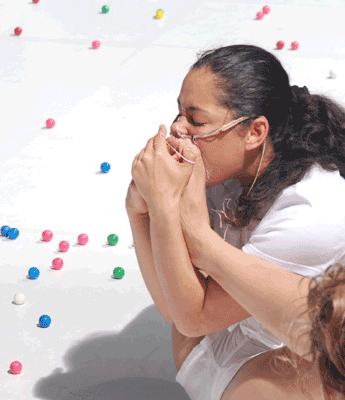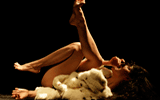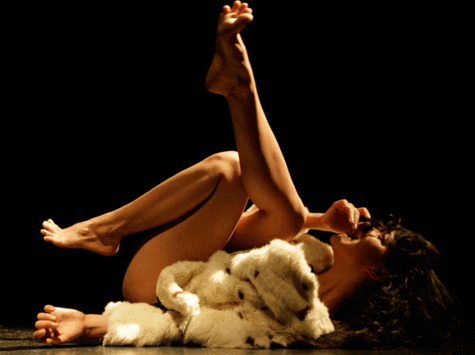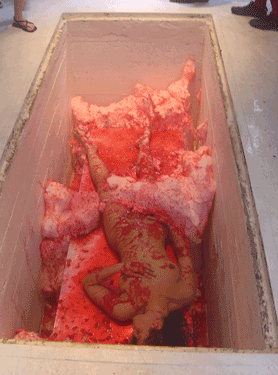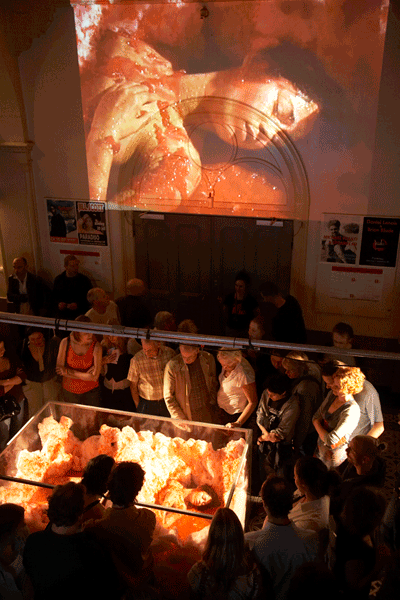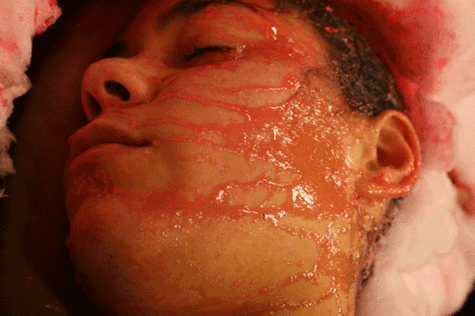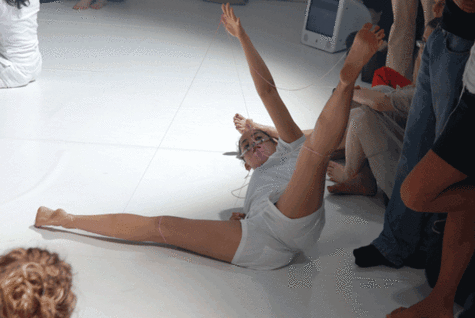Doron Hirsch
- Opleiding
- DAS Choreography
- Lichting
- 2008
Doron Hirsch studied theatre at the Jerusalem High School of the Arts from1996-1998 and specialized in movement and light design at the School of Visual Theatre in Jerusalem from 1999-2002. He pursued Butoh and Nogushi Taiso studies in several countries such as the USA, Mexico and Japan between 2002 and 2004. He makes installation work and performances, often incorporating projected images.
Overige projecten
‘La La Land’ (2006)
A research project on childhood memories that compares and exchanges the various manners in which the project’s participants were brought up, in correlation to their diverse cultural backgrounds and biographies.
The project focuses on the gradual shift that has occurred in our generation from a more individualistic children’s culture idiosyncratic to each country/region in the world, to the global/collective ‘kid’s culture’ dominated by the United States. This shift includes the introduction of automated toys, cable TV (in full color) and computer games that can be copied from one disc to another.
“Sharing your ‘toys’ was never as easy, but somehow most of the early video games were a lot more fun to play alone”.
The project was presented as a theatre/dance performance that attempted to create an ideal environment/land for the audience to go back in time and access their childhood memories; requesting that they also contribute one of their own recollections to the memory archive of ‘La La Land’.
Performance: Shani Leiderman, Tashi Iwaoko, Luisa Cardona, Pauline Dijon, Clementine Noblecourt, Doron Hirsch, Ed Kakis and Daniel Schoevaart.
Slide Projection/light design: Doron Hirsch.
Videos: Ohav Bezerano Gross, Eshy Gross, Michal Peleg.
Advisor: Simon Dove
‘V.A.P’ [Visualization, Association, Pleasure] (2007)
A multi-disciplinary project exploring the heterogeneous, elusive and mysterious nature of the way our associative/memory system works.
The working process investigated ways of ‘translating’ the memories of the performers into movement. Attempting to trace/map how sensorial stimuli such as recorded images and sound trigger different types of recollections from each individual’s past.
The presentation format borrows elements from both the mediums of installation and performance. Symbolizing as a whole how the many different processes that fall under the same label, memory, coexist simultaneously within our minds and relate to each other.
Performance: Ed Kakis, Josta Ruby Oniel, Yehudit Mizrahi, Kwok Wan and Pablo Fontedevila.
Slide Projection: Doron Hirsch.
Light design: Doron Hirsch & Pablo Fontedevila
Technical assistance: Dave Krooshof
Advisor: Nicole Beutler.
‘Loud Rooms’ (2007)
A project that explores a symbiotic relationship between Butoh and electronic music. This relationship is examined through the concepts of space of the two art forms.
The scenes in the performance are defined as metaphorical spaces corresponding to an emotional state and vice versa, as the transformation between those different spaces and states constitutes the form of the piece.
Concept: Doron Hirsch and Tom Tlalim.
Movement: Doron Hirsch.
Music: Tom Tlalim.
Light design and operation: Pablo Fontedevila.
‘Grandmother's Hair’ (2008)
A sugary sweet installation/performance exploring the transformation process of the substance known as:
Cotton Candy (US), Sugar Floss (UK), Suiker Spin (NL) [sugar spider], Barbe à Papa (France) [papa's beard] and Searot Savta [grandmothers hair] (Israel).
As the transformation process occurs the material changes color and consistency while slowly revealing a grotesque yet pleasant image in relation to the performers body.
Performance: Josta Ruby O'niel.
Water system: Ghido Bevers.
Shown in Huisrechts Gallery and I Like to Watch Too festival, Paradiso, Amsterdam
‘E120’ (2008)
“E120 is a bright red color pigment used in foods in cosmetics in order to create the color pink. It is derived from specific species of cochineal insects. The pigments manufacturing process includes drying, crushing and boiling of the insects body in order to extract the carminic acid found in the highest density in its eggs. The acid is later treated with other substances such as: alum, cream of tartar, stannous chloride, or potassium hydrogen oxalate. Nevertheless, it is regarded as a natural color.”
The project is inspired by the increase and perhaps obsession in which we as a society have come to relay on artificial materials while exploring within this context the definition of the word artificial in contrast to natural. It wishes to question the plausible relation of our commodity-based society to the vastly growing increase of the phenomena of boredom.
The performance explores various ‘passive actions’ in relation to various pink materials that can change shape including cotton candy, bubble gum and inflatable rubber. Seeking to come up with a way to deal/escape/accept this dreadful state of ennui.
Performance: Josta Ruby O'niel, Adi Kahana, Simone Heitinga, Isabel Lucena, Maria Mavridou and Rinus Aafjes.
Decor construction: Guido Bevers and Frits van Driel.
Advisor: Danielle van Vree.
Additional advice: Johan Reyiners, Myriam Van Imschoot, Tashi Iwaoka and Pablo Fontdevila.
Technical assistance: Dave Krooshof, Jan Trutzschler, Tosja Zuyderhoff, Peter Castelijn and Paul Gravenmaker.
Coordination: Nina Fajdiga and Theresia Knevel.
Production: Melkweg Theatre, Coproduction: DWA.
Candy sponsorship: Papa Bubble
Shown at Danswerkplaats Amsterdam
‘W_Space’ (2007-2008)
Research project on movement controlling audio synthesis in relation to various perspectives/concepts of the space.
With Tom Tlalim and Paola Tognazzi.
Supported by Steim, Center for research & development of instruments & tools for performers in the electronic performance arts.
‘Hotaru’ (2007-2008)
Research project on light and its relation to movement stimuli and sensory perception.
With Pablo Fontedevila.
Supported by AHK Practicum Fonds Generale.
Paper
The natural, the artificial and the in-between
This paper poses questions about authenticity in today’s society. In our day-to-day life, artificial and enhanced products are constantly offered to us. The text draws parallels between how prepared food is taste and aroma enhanced and our whole way of life, artificially modifying our bodies and the world around us.
Download The natural, the artificial and the in-between (PDF)
